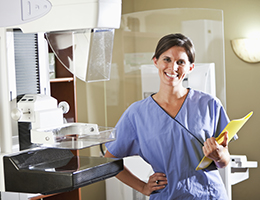
If you’re a woman 40 or older, it might be time to put regular mammograms on your to-do list. This screening test offers substantial benefits for fighting breast cancer, according to the American Cancer Society.
To get the full benefit of this tool, try the suggestions below.
Plan ahead
It’s essential to get mammograms regularly. For many women, that’s once a year or once every other year. If your doctor's office or health insurance company doesn't send you reminders, find some way to remind yourself. Maybe you could use a reminder app on your computer or smartphone.
Try to find a facility you like that specializes in mammograms so you can keep going to the same place. Going to the same facility makes it easier to compare your mammograms from year to year. If you move or start going to a different facility, have your records transferred to the new facility.
If you’re still having menstrual periods, don't schedule your mammogram a week before your period or during your period. That’s when your breasts are likely to be tender and swollen. You'll avoid a lot of discomfort, and your technician will get better images if you schedule your mammogram during the first two weeks after your period.
Go prepared
On the day of the test, don’t wear deodorant or lotion. They can interfere with the x-ray. And remember you’ll need to undress from the waist up, so you may want to wear a skirt or pants instead of a dress.
Bring a list of where and when you’ve had mammograms, biopsies or other breast treatments before. Prepare yourself to talk about any symptoms or problems you're having with your breasts, any previous surgeries, and whether you use hormones or have a family or personal history of breast cancer.
Follow up
If you haven’t received the results of your mammogram 10 days after your test, call your doctor or the testing center.
Reviewed 9/27/2023